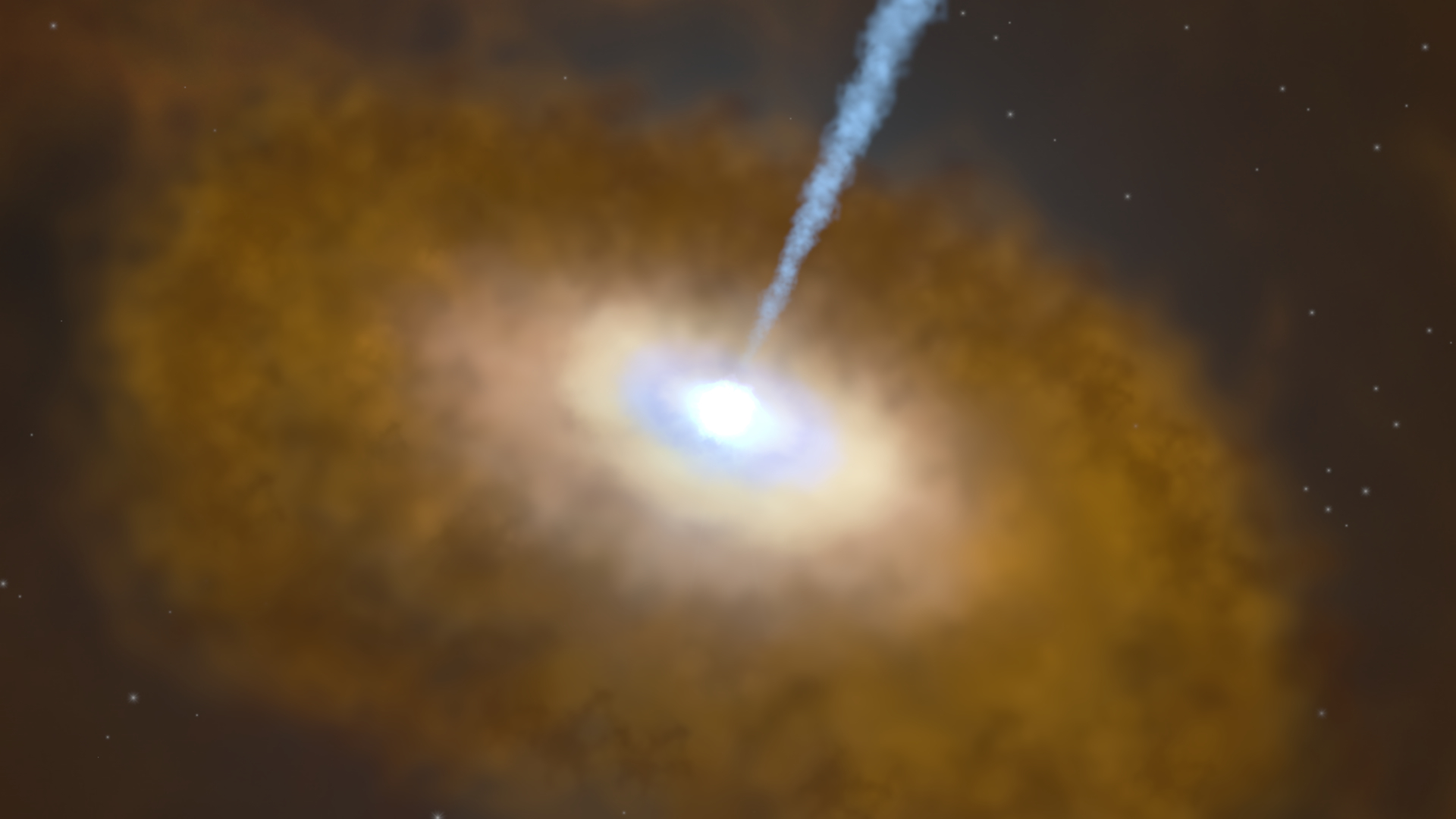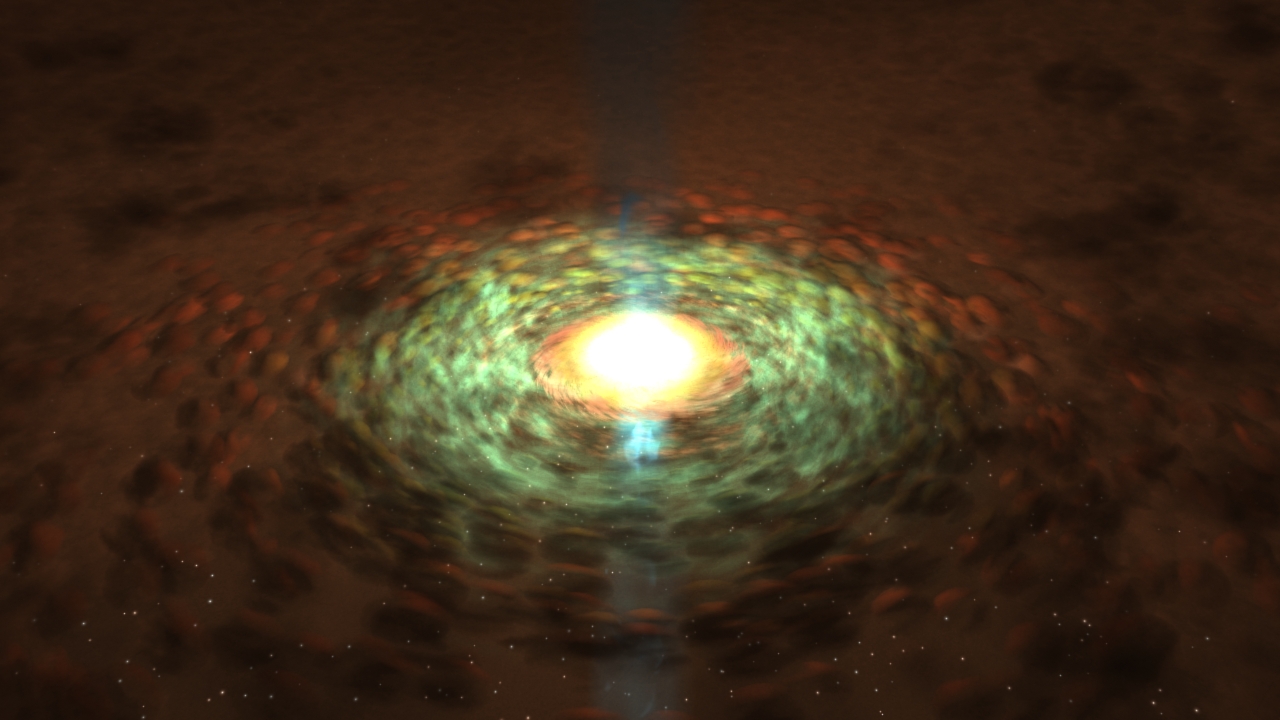NASA's Swift Finds 'Missing' Active Galaxies
Most large galaxies contain a giant central black hole. In an active galaxy, matter falling toward the supermassive black hole powers high-energy emissions so intense that two classes of active galaxies, quasars and blazars, rank as the most luminous objects in the universe. Thick clouds of dust and gas near the central black hole screens out ultraviolet, optical and low-energy (or soft) X-ray light. Although there are many different types of active galaxy, astronomers explain the different observed properties based on how the galaxy angles into our line of sight. We view the brightest ones nearly face on, but as the angle increases, the surrounding ring of gas and dust absorbs increasing amounts of the black hole's emissions.
What we see from an active galaxy's black hole depends on our viewing angle. Seen edge-on, the dense clouds of dust and gas around the central black hole prevent all but the most penetrating radiation to reach us. Artist's interpretation.

View of AGN with center visible

View of AGN with center occluded by edge

A newfound population of heavily absorbed active galaxies (orange curve) is thought to make the greatest contribution to the cosmic X-ray background (light blue). Both have similar spectral shapes and peak at similar energies. Adding in the known contributions from less-absorbed active galaxies (yellow and purple), appears to fully account for the background.

A newfound population of heavily absorbed active galaxies (orange curve) is thought to make the greatest contribution to the cosmic X-ray background (light blue). Both have similar spectral shapes and peak at similar energies. Adding in the known contributions from less-absorbed active galaxies (yellow and purple), appears to fully account for the background. No Labels
Narrated animation describing active galaxies.
Credit: NASA/Sonoma State Univ./Dana Berry (Skyworks Digital)
For More Information
Credits
Please give credit for this item to:
NASA/Goddard Space Flight Center. However, each image should be credited as indicated above.
-
Animators
- Scott Wiessinger (UMBC)
- Michael McClare (HTSI)
- Donna Cox (AVL NCSA/University of Illinois)
- Chris Smith (HTSI)
-
Science writer
- Francis Reddy (University of Maryland College Park)
-
Video editor
- Scott Wiessinger (UMBC)
-
Narrator
- Scott Wiessinger (UMBC)
-
Producer
- Scott Wiessinger (UMBC)
-
Scientists
- Marco Ajello (SLAC National Accelerator Laboratory)
- Davide Burlon (Max Planck Institute for Extraterrestrial Physics)
-
Graphics
- Francis Reddy (University of Maryland College Park)
Release date
This page was originally published on Thursday, January 20, 2011.
This page was last updated on Wednesday, May 3, 2023 at 1:53 PM EDT.
Missions
This page is related to the following missions:Series
This page can be found in the following series:Tapes
The media on this page originally appeared on the following tapes:-
Swift Survey Finds 'Missing' Active Galaxies
(ID: 2011009)
Thursday, January 20, 2011 at 5:00AM
Produced by - Robert Crippen (NASA)
Datasets used
-
[Swift]
ID: 217
Note: While we identify the data sets used on this page, we do not store any further details, nor the data sets themselves on our site.

